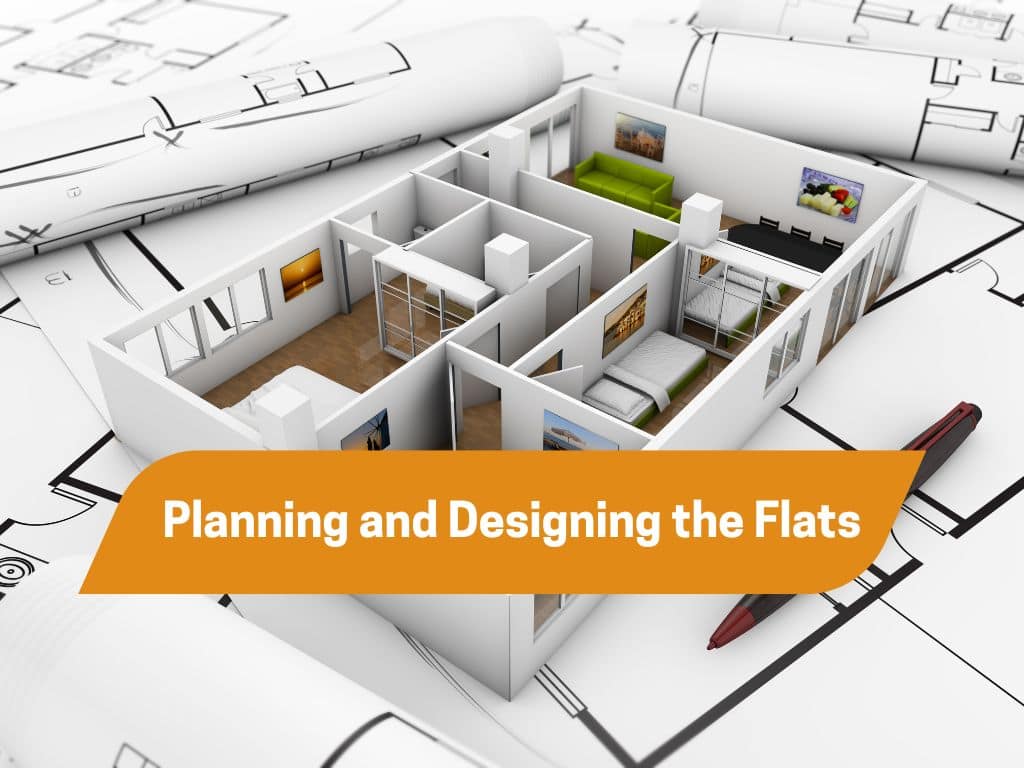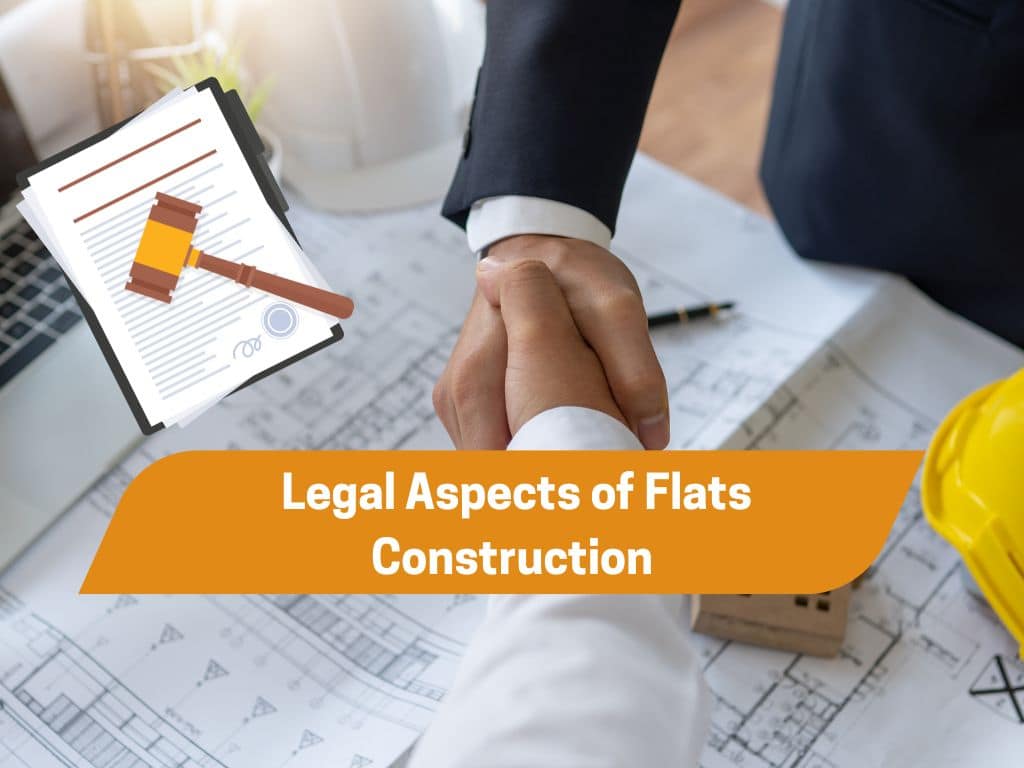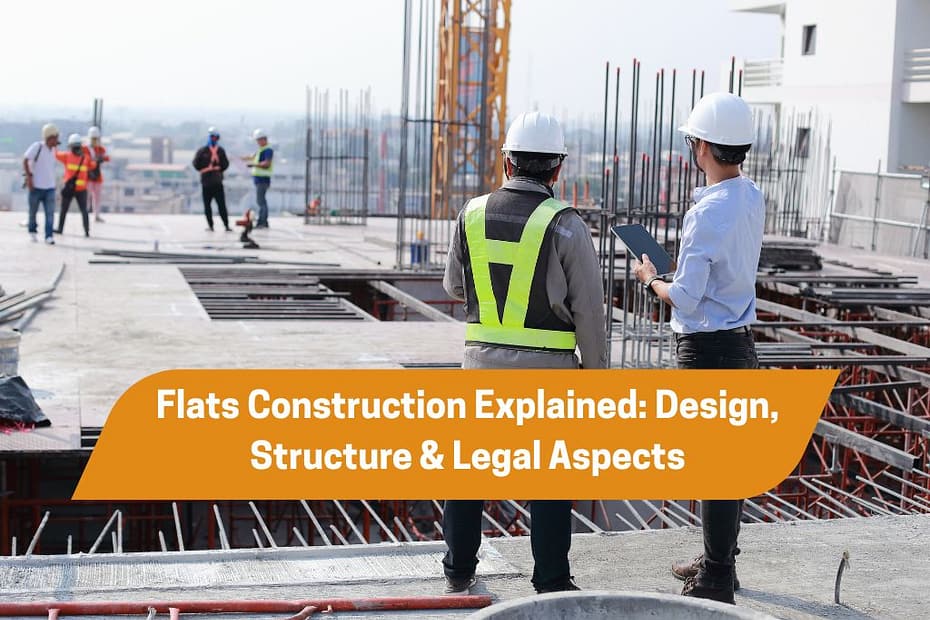In today’s modern world, flats construction is becoming one of the most preferred options for urban housing. With growing populations, increasing demand for compact yet comfortable spaces, and better infrastructure in cities, more people are opting for flats instead of independent houses. Whether you’re planning a residential project or investing in commercial construction, understanding the basics of flats construction can save you time, money, and stress.
In this article, we’ll explain everything you need to know about flats construction — from the design process and structural elements to legal approvals and best practices. Whether you are a first-time builder, a real estate investor, or someone interested in new home construction, this guide will help you make informed decisions.
What is Flats Construction?
Flats construction refers to the development of multi-unit residential buildings where each floor may consist of one or more living units (flats or apartments). These types of projects are commonly seen in urban and suburban areas due to the efficient use of space and shared infrastructure.
Unlike home construction, where a single-family house is built on an individual plot, flats are constructed vertically in towers or blocks, making them ideal for cities where land is limited.
Planning and Designing the Flats

The first step in flats construction is proper planning and designing. This phase includes architectural design, structural planning, and MEP (Mechanical, Electrical, Plumbing) layout. Key things to consider:
● Architectural Design
- Floor plan (1BHK, 2BHK, 3BHK, etc.)
- Common areas (stairs, lift, corridors)
- Ventilation and sunlight
- Parking space
● Structural Design
- RCC (Reinforced Cement Concrete) frame structure is commonly used.
- Soil testing is essential before laying the foundation.
- Load-bearing calculations ensure long-term safety.
Hiring a professional architect and structural engineer is crucial during this stage. A well-designed building not only ensures safety but also improves property value.
Legal Aspects of Flats Construction

Every flats construction project must follow legal guidelines laid out by the local development authority or municipal body. Ignoring these rules can lead to heavy penalties or even demolition.
● Land Title and Zoning
Ensure the land is legally clear and zoned for residential or commercial construction.
● Building Plan Approval
Submit your floor plan and building elevation to the local authority for approval.
● Environmental Clearance
If your project is large (more than 20,000 sq ft), you may need environmental clearance.
● RERA Registration
Under the Real Estate Regulatory Authority (RERA), every housing project must be registered for transparency and accountability.
● Completion and Occupancy Certificates
After construction, you must obtain a Completion Certificate (CC) and an Occupancy Certificate (OC) before selling or occupying the flats.
These documents are a must for legal ownership and further loan processing.
Step-by-Step Flats Construction Process
Here’s a general overview of how flats construction is done:
● Step 1: Land Purchase and Clearance
Identify a suitable plot of land that fits the local bylaws for home or commercial construction. Verify title, clearances, and zoning.
● Step 2: Layout and Budget Planning

Decide how many flats you want to build. Prepare a budget, including land cost, construction, labor, taxes, legal, and marketing (if selling).
● Step 3: Design and Approvals
Create building plans and get them approved by the municipal authority. Start RERA registration if applicable.
● Step 4: Foundation and Basement
Start with excavation and laying the RCC foundation. In many flats, the basement is used for parking or storage.
● Step 5: Superstructure
Construct columns, beams, walls, floors, and roofs. Use high-quality material for safety and durability.
● Step 6: MEP Work
Electrical, plumbing, and fire safety systems are installed during this stage. Waterproofing is also important.
● Step 7: Finishing Work
Includes plastering, tiling, painting, electrical fittings, and carpentry. The external area, staircases, and terraces are also completed.
● Step 8: Final Inspection and Handover
Obtain the Completion Certificate and get final inspections done. Flats are now ready for possession or sale.
Common Mistakes to Avoid in Flats Construction
Here are some mistakes that can derail your project:
- Ignoring legal paperwork
- Using low-quality construction materials
- Not hiring experienced professionals
- Poor budgeting and cost overruns
- Delayed project timelines
Whether it’s a new home construction or showroom construction, planning ahead is the key to a smooth and successful project.
Flats Construction vs. Other Types of Construction
Let’s compare flats construction with other common types:
| Type of Construction | Description |
|---|---|
| Flats Construction | Multiple residential units built vertically; shared amenities and facilities. |
| Home Construction | Independent residential unit; full control but more expensive per sq. ft. |
| Commercial Construction | Offices, malls, hotels; built for business purposes. |
| Showroom Construction | Specifically designed to display and sell products; needs large open spaces. |
| New Home Construction | Often refers to custom homes built from scratch on new plots. |
Each type serves a different purpose and requires its own design, legal approvals, and technical planning.
Tips for Successful Flats Construction

- Always consult with experienced architects and civil engineers.
- Choose quality materials — cement, steel, bricks, and plumbing.
- Plan for future maintenance – use modern waterproofing and insulation methods.
- Understand the local market before deciding on flat sizes and pricing.
- Keep documentation organized for smoother bank loans and sales.
Sustainability in Flats Construction
Green building practices are gaining popularity. Consider the following:
- Rainwater harvesting
- Solar panels
- Waste management systems
- Energy-efficient lighting and appliances
This not only helps the environment but also reduces long-term costs for flat owners.
Conclusion
Flats construction is a major undertaking that combines vision, planning, design, execution, and legal compliance. Whether you are developing for personal use, for sale, or as a rental property, knowing the ins and outs of flats construction will help you achieve better results.
From new home construction to large-scale commercial construction, understanding the design and legal aspects is essential for long-term success. Whether it’s a dream home or a high-rise apartment project, make sure you’re informed, prepared, and compliant at every stage of construction.
If you’re considering flats construction, now is the time to plan smartly, build wisely, and invest securely.
Home
Let’s work together on your next Construction Project
K.S. Builders is a trusted government-enlisted construction company based in Haryana, delivering high-quality building and road infrastructure projects across the state.
